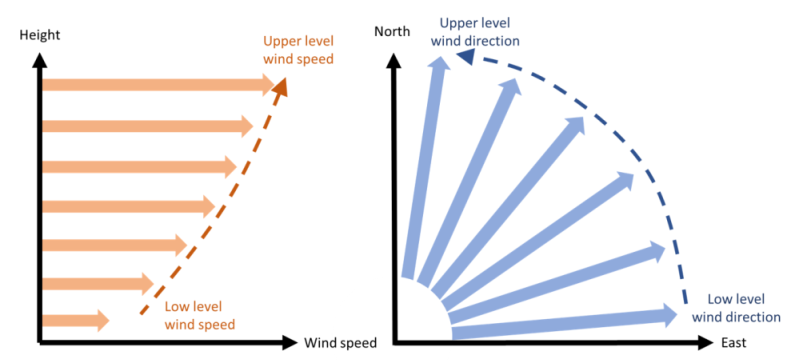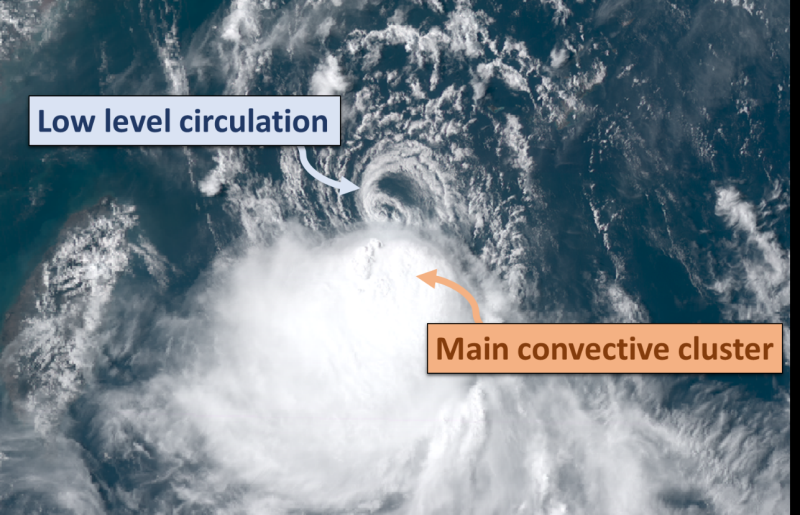How does vertical wind shear affect the development of Tropical Cyclone?
How does vertical wind shear affect the development of Tropical Cyclone?
LAM Ming-chun and KONG Wai
October 2022
The formation and development of tropical cyclone normally require to tie in with various favourable atmospheric and oceanic conditions, e.g. warm sea surface temperatures[1] and being over areas 5 degrees outside the equator[2] etc. Meanwhile, the strength of vertical wind shear in the atmosphere is also a critical factor to the development of a tropical cyclone. So what is vertical wind shear and how does it affect the development of tropical cyclone?
Vertical wind shear is the change in wind speed and direction with the altitude in the atmosphere (Figure 1). The larger the change in wind speed and direction with the altitude, the stronger the vertical wind shear. On the opposite, the smaller the change, the weaker the vertical wind shear.
The immense energy required for the development of a tropical cyclone are mainly derived from the release of latent heat energy during condensation of water vapour. Those heat energy generally concentrate in the core region of a tropical cyclone, causing the temperature at the storm centre to be higher than the outer region, and this structure is known as “warm-core”. If the warm-core structure is damaged, the development of the tropical cyclone will be impacted.
Rather strong vertical wind shear could tilt the convective clusters near the centre of the tropical cyclone. Not only will this weaken vertical activities of the convections, but will also shift the heat and moisture away from it the core region, resulting an adverse impact on the warm-core structure which could eventually affect the development of tropical cyclone. If a tropical cyclone is being affected by rather strong vertical wind shear for a sustain period of time, the storm structure will be damaged and its low level circulation could be separated from the main convective cluster (figure 2), further weakening the tropical cyclone and even possibly causing it to dissipate.

Figure 1 Vertical wind shear due to change of wind speed with height (left), vertical wind shear due to change of wind direction with height (right).

Figure 2 22 August 2021, Tropical Cyclone Omais being affected by rather strong vertical wind shear, its low level circulation was exposed and was separated from the main convective cluster. Omais weakened gradually afterwards.
References:
[1] Hong Kong Observatory educational resources:Why do Tropical Cyclones Require Sea Surface Temperatures of 26oC to Form?
[2] Hong Kong Observatory educational resources:Why do Tropical Cyclones always Form more than 5 degrees of Latitude away from the Equator?
[1] Hong Kong Observatory educational resources:Why do Tropical Cyclones Require Sea Surface Temperatures of 26oC to Form?
[2] Hong Kong Observatory educational resources:Why do Tropical Cyclones always Form more than 5 degrees of Latitude away from the Equator?